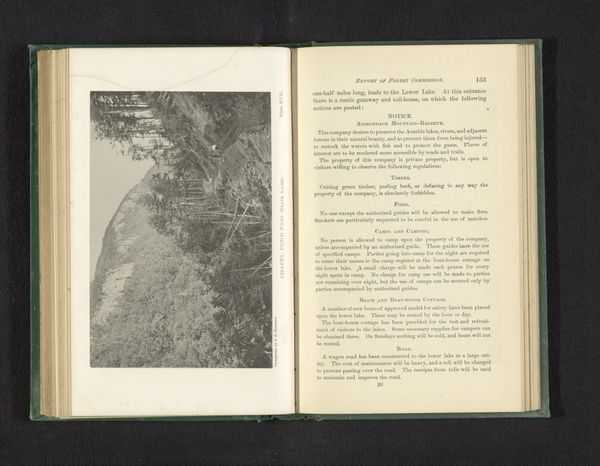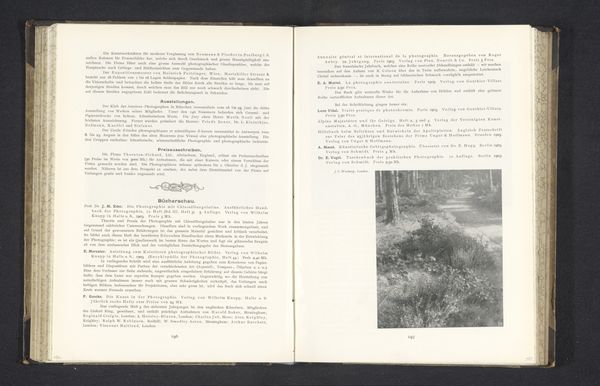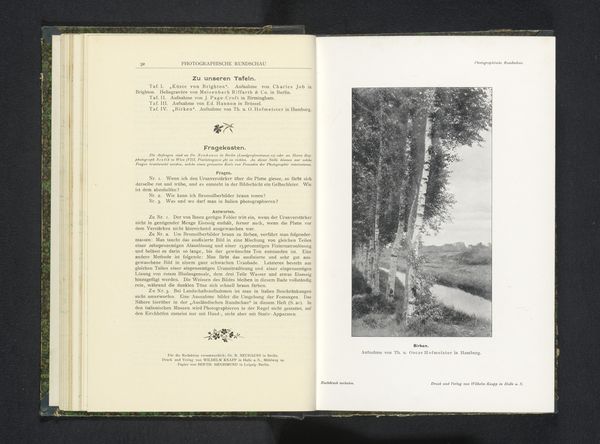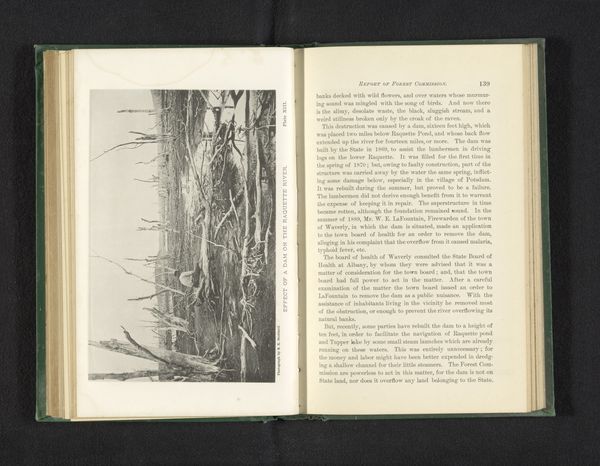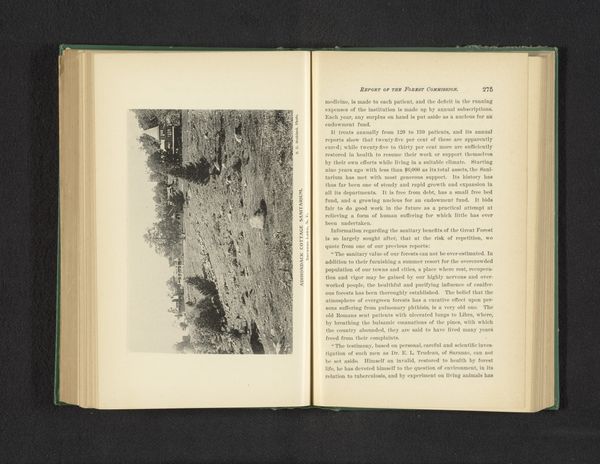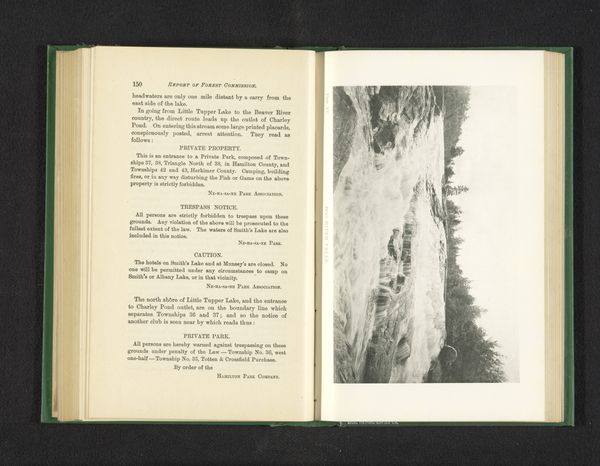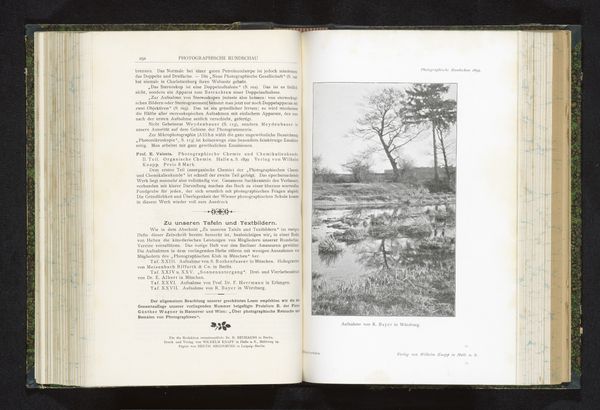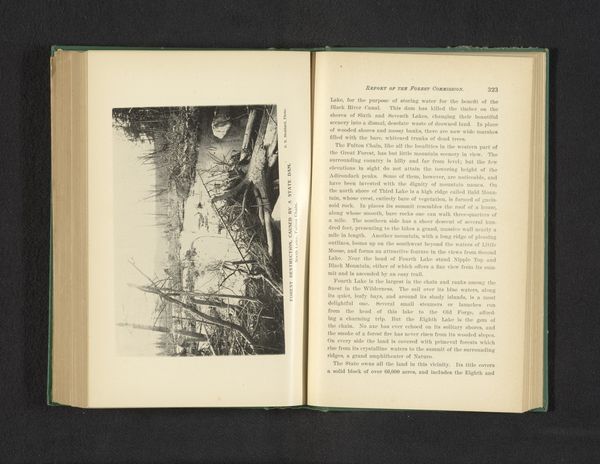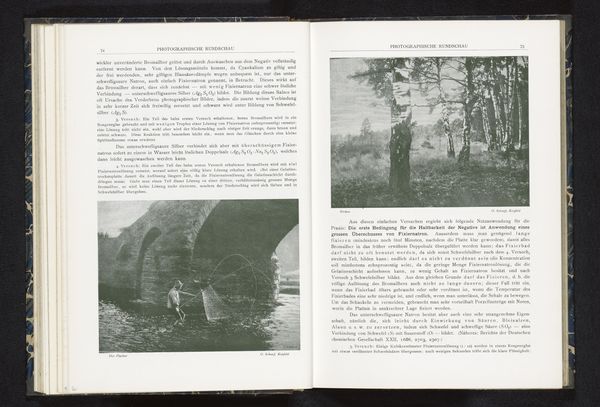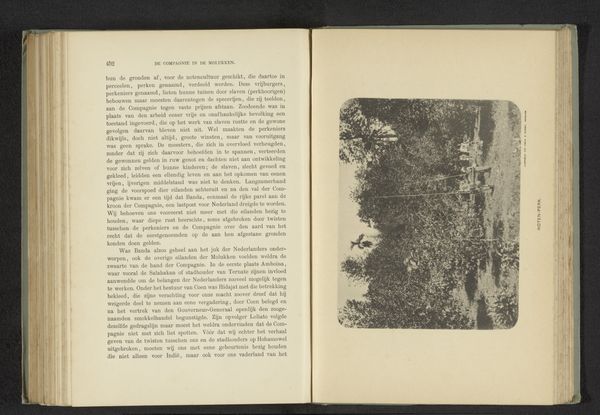
print, photography, gelatin-silver-print
# print
#
landscape
#
photography
#
gelatin-silver-print
Dimensions: height 139 mm, width 93 mm
Copyright: Rijks Museum: Open Domain
Curator: Ah, this page showcases Osborne I. Yellott's "Landschap," a gelatin-silver print from before 1902. Editor: It feels almost like a memory. The scene, all soft edges and misty light. Is that a stream cutting through the center? Curator: Precisely. Yellott was known for these kinds of tonalist landscapes, focusing less on sharp detail and more on mood. It appears in this volume next to a discussion on pinhole photography, emphasizing that kind of lens-less effect. Editor: It reminds me of old Japanese woodblock prints; how they use simplified forms to convey a deep sense of place. Is this romanticizing the pre-industrial landscape a trend in early photography? Curator: Absolutely. The rise of industrialization brought with it a yearning for simpler, untouched scenes. Photography offered a way to capture that ideal, to construct it in some ways. Yellott’s work, while technically photographic, still reflects this desire for a pure, unadulterated nature. You could even say it sentimentalizes the land. Editor: I like "sentimentalizes." It feels right for a culture facing down real changes to nature's role in everyday life. Is that why he used the gelatin silver process, you think, to get such a dreamlike effect? Curator: Possibly. The process allowed for greater manipulation of tones and textures, giving photographers control over the final image’s emotional impact. In an increasingly visually-saturated world, the decision to produce such a moody image suggests an active resistance to what a photograph can or should do. It’s quite deliberate. Editor: There's a quiet resistance to definition. It has that appealing blur of something both there and not-there at the same time. Something ancient perhaps. I enjoy this "Landschap." Curator: It encourages reflection, even wonder. The print also functions here, I think, as a visual argument alongside the text, proof-of-concept in a way for Yellott's method. A fascinating document.
Comments
No comments
Be the first to comment and join the conversation on the ultimate creative platform.
